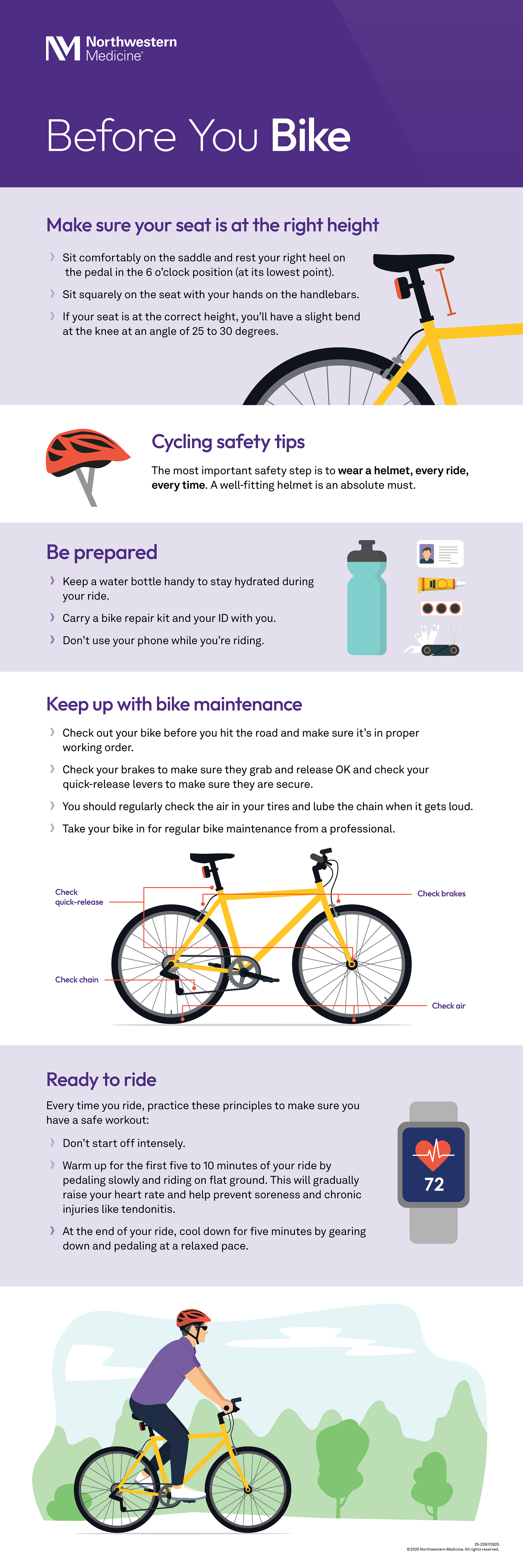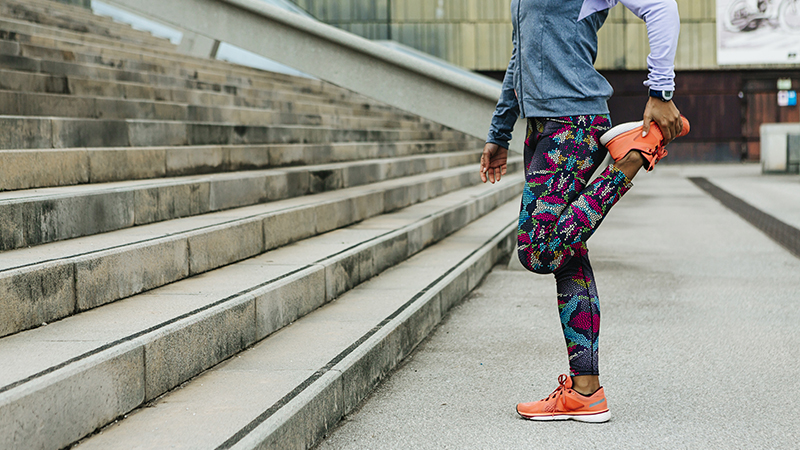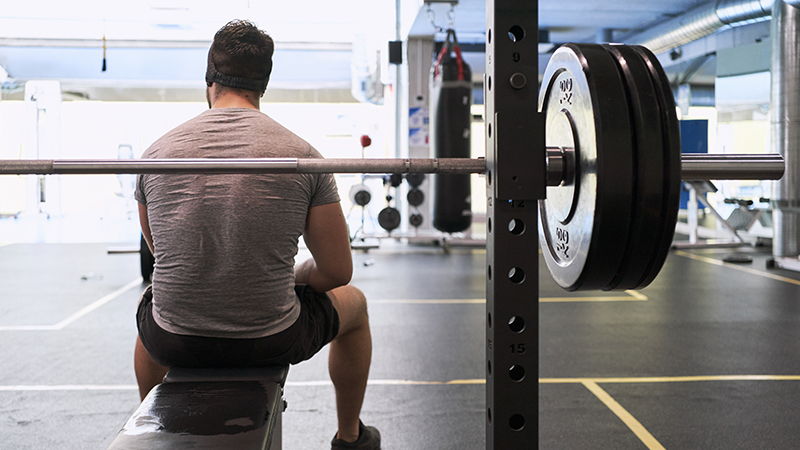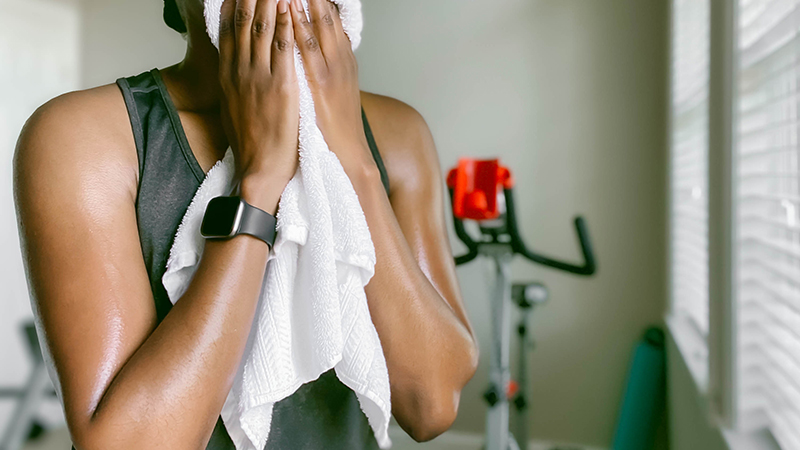The Health Benefits of Cycling
Plus, Safety Tips for Riding Your Bike
Updated June 2025
Riding your bike is fun and also good for your health. It doesn't matter if you're a casual cruiser or a seasoned spinner. The health benefits are the same.
Cycling puts less stress on your joints, knees and hips than running or walking, making it a great cardio option if you have any injuries or joint issues.
The Health Benefits of Bicycling
Biking to work for just 30 minutes burns an average of about 300 calories.
In addition to being a great workout, biking offers a host of other benefits, including:
- Improved cardiovascular health
- Increased muscle strength and endurance
- Support for weight management
- A low-impact way to stay active
- Improved balance and coordination
- Help with managing stress, anxiety and depression
Before You Bike
Size Up Your Bike
"Your bike should be sized according to your body proportions," says Mike Humphrey, PT, CSCS, a physical therapist and strength and conditioning specialist at Northwestern Medicine. "This will help you avoid injury from bad mechanics. If you have any doubts as to how the bike fits, visit your local bike shop.”
How to Choose the Right Bike Size
Bike size may vary by brand. It can also be different from bicycle to bicycle, but as a general rule, here's how to find a bike that fits you well.
- Put a leg on either side of your front tire tube.
- Stand with both feet flat on the ground and check the room between the top tube and your groin.
- There should be about 1 to 2 inches between your groin and the top tube if you plan to ride on the road, and 2 to 4 inches if you plan to ride off-road. The extra space for off-road riding will allow for better control of the bike on uneven ground.
Seat height and positioning are also important for comfort and safety. Your seat should be level or tilted slightly downward. To make sure your seat is at the right height:
- Sit comfortably on the saddle and rest your right heel on the pedal in the 6 o'clock position (at its lowest point).
- Sit squarely on the seat with your hands on the handlebars.
- If your seat is at the correct height, you'll have a slight bend at the knee at an angle of 25 to 30 degrees.
Cycling Safety Tips
The most important safety step is to wear a helmet, every ride, every time. A well-fitting helmet is an absolute must.
Follow the rules of the road
- Know your traffic laws and hand signals when you share the road with cars.
- Ride on the right side of the road, in the same direction as traffic (avoid sidewalk riding).
- Plan your route to avoid busy streets with multiple driveways or parking lots.
- Only ride in areas where you feel comfortable and safe.
Stay visible
- To help others see you, add reflectors, headlights and blinking rear lights to your bike, especially when riding in low light.
- Wear light-colored or reflective clothing.
Be prepared
- Keep a water bottle handy to stay hydrated during your ride.
- Carry a bike repair kit and your ID with you.
- Don't use your phone while you're riding.
Keep up with bike maintenance
- Check out your bike before you hit the road and make sure it's in proper working order.
- Check your brakes to make sure they grab and release OK and check your quick-release levers to make sure they are secure.
- You should regularly check the air in your tires and lube the chain when it gets loud.
- Take your bike in for regular bike maintenance from a professional.
Get Into Cycling Shape
If you're looking to get a workout and not just get from point A to point B, you should maintain a target heart rate during your ride.
- Your target heart rate is 50% to 70% of your maximum heart rate.
- It’s the range where you can safely and effectively do physical activities. This includes running, cycling, swimming or any other aerobic exercises.
- To calculate your target heart rate range, subtract your age from 220. Multiply this number by 0.50 and 0.70. The more fit you are, the higher the percentage of your maximum heart rate you can safely maintain during exercise.
- Use a heart-rate monitor to get an exact measurement as you exercise.
Every time you ride, practice these principles to make sure you have a safe workout:
- Don't start off intensely.
- Warm up for the first five to 10 minutes of your ride by pedaling slowly and riding on flat ground. This will gradually raise your heart rate and help prevent soreness and chronic injuries like tendonitis.
- At the end of your ride, cool down for five minutes by gearing down and pedaling at a relaxed pace.
Potential Injuries From Riding Your Bike
While cycling offers numerous health benefits, it is important to note that, like any physical activity, it comes with risk.
- Fit-related injuries
- Riding a bike that doesn’t fit you properly can cause wrist and lower back injuries.
- New riders often experience wrist pain, while seasoned pros are likely to develop knee, neck or lower back pain.
- Prevention: Make sure that your bike fits properly.
- Handlebar syndrome (cyclist's palsy)
- Regular cyclists can develop this condition when the ulnar nerve in the wrist is compressed, similar to carpal tunnel syndrome. Symptoms include pain, numbness and tingling in the hands.
- Prevention: Wear padded biking gloves to help take some of the pressure off your wrists.
- Knee pain
- To minimize knee injuries, do not position your seat too low. “The higher the seat, the less stress on the knees, but you must also be able to comfortably place your feet on the ground when you stop or get on or off the bike,” says Humphrey.
- Saddle sores
- These are skin problems caused by friction in your seat and spending a long time in the saddle. Wearing old shorts that don’t absorb sweat or provide enough coverage, or having a seat that is too high, can make them worse.
- Prevention: Wear well-fitting padded bike shorts can help you prevent skin injuries.
Whether from a crash, fall, overtraining or poor fit, injuries happen. Listen to your body and respond to aches or strains, adjusting your routine as needed. If you experience pain for more than a week, you may want to consult a physical therapist.






